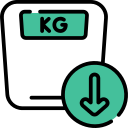Q. How is a chest infection diagnosed?
Doctor Answer is medically reviewed by SecondMedic medical review team.
Diagnosing a chest infection typically involves a combination of clinical evaluation, medical history assessment, and diagnostic tests. Here are the common steps involved in diagnosing a chest infection:
1. Medical History: The healthcare provider will begin by asking you about your symptoms, including the type and duration of cough, presence of fever, chest pain, and any other relevant details. They will also inquire about your medical history, underlying health conditions, recent travel, and exposure to sick individuals.
2. Physical Examination: The healthcare provider will perform a physical examination, which may include listening to your chest with a stethoscope to assess lung sounds, checking for signs of chest pain, and evaluating your overall condition.
3. Chest X-ray: A chest X-ray is a common diagnostic test used to visualize the lungs and identify abnormalities, such as infiltrates, consolidation, or fluid buildup. It can help determine if there are signs of pneumonia or other lung conditions.
4. Sputum Culture: If you are producing sputum or phlegm, a sample may be collected and sent to a laboratory for culture and sensitivity testing. This can help identify the specific bacteria causing the infection and determine which antibiotics are most effective.
5. Blood Tests: Blood tests, such as a complete blood count (CBC) and inflammatory markers like C-reactive protein (CRP) and erythrocyte sedimentation rate (ESR), may be conducted to assess the severity of the infection and the body's inflammatory response.
6. Viral Testing: If a viral infection is suspected, specific tests may be performed to identify the responsible virus. For example, PCR (polymerase chain reaction) tests can detect viruses like influenza or respiratory syncytial virus (RSV).
7. Other Imaging: In some cases, additional imaging studies, such as a CT scan, may be ordered to provide more detailed images of the lungs and surrounding structures.
8. Bronchoscopy: In rare and severe cases, a bronchoscopy may be performed. This procedure involves using a thin, flexible tube with a camera to view the airways and collect samples for further analysis.
The specific diagnostic approach will depend on the individual's symptoms, medical history, and the suspected cause of the chest infection. Prompt and accurate diagnosis is essential to determine the appropriate treatment, especially in cases of bacterial chest infections that may require antibiotics. If you suspect you have a chest infection, it's important to consult with a healthcare professional for proper evaluation and diagnosis.
Related Questions
-
What to drink for weight loss? | Secondmedic
-
Which diet is most successful for weight loss? | Secondmedic
-
How can I reduce edema naturally? | Secondmedic
-
Does kidney disease cause itching? | Secondmedic
-
What are the four categories of itching? | Secondmedic
-
What leads to the development of ascites? | Secondmedic












